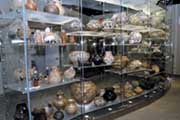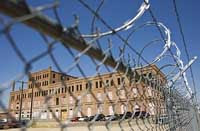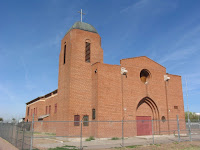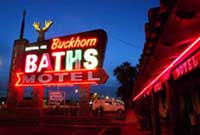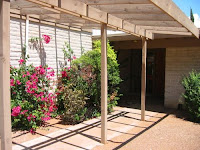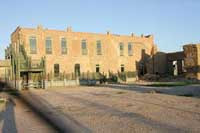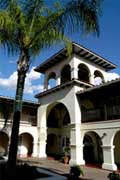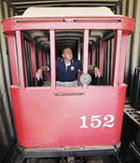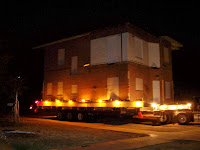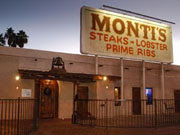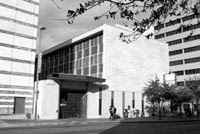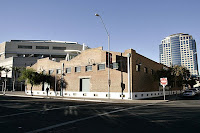 [Source: Jahna Berry, Arizona Republic]
[Source: Jahna Berry, Arizona Republic] -- Phoenix City Council members and their top aides may have to tell a court whether they had improper talks with the developer of a proposed $200 million W Hotel project. Last week, a Maricopa County Superior Court judge ordered a trial to sort through conflicting accounts about how the developer tried to sway city leaders to build the project. That means council members and top aides may have to testify about the behind-the-scenes lobbying tactics in the controversial project.
Developer Suns Legacy Partners was poised last year to build a 39-story W Hotel near US Airways Center in downtown Phoenix. A key part of the project was an 11-story office and condo tower that would have been built on top of a historic warehouse, preserving it from being torn down. Even if Phoenix wins the court case, litigation and other problems have effectively killed the hotel project for now. Legal wrangling has delayed the project, and the developer's deal with W Hotel expired because ground was not broken by June 30. In his four-page Sept. 18 ruling, Maricopa County Superior Court Judge Peter Swann wrote that a trial would have to sort out whether Mayor Phil Gordon, his council colleagues, and their aides had improper talks with Suns Legacy Partners, the development group that includes Suns owner Robert Sarver and former Suns owner Jerry Colangelo.
The litigation is just about procedures; it's not about the City Council's decision to build a condo tower on top of a historic building, the mayor and the city attorney say. The city is weighing its legal options, City Attorney Gary Verburg says.
Gordon denies any wrongdoing. "There was no influence behind the scenes or any type of nefarious-type discussions," Gordon said. "Everything was public."
The preservationists are prepping for trial, although no date has been set. They filed the lawsuit to protect the 1920s warehouse, the last vestige of Phoenix's old Chinatown. "Phoenix can do better with its historic structures." said Barry Wong, a former state lawmaker who is a spokesman for the coalition of preservationists and Asian-American community groups.
The City Council was essentially sitting as a judge when it overruled the historic-preservation officials who didn't think the condo tower should be built on top of the historic warehouse, the coalition argued in court. When acting as judges, council members can't have outside talks with the parties in the dispute, the preservationists argued.
The warehouse, the Sun Mercantile Building, is owned by the city. Suns Legacy Partners has a long-term lease agreement. Lawyers for both sides agree that preservationists and the hotel developer lobbied the City Council. However, the preservationists argue that council members and their top aides -- including the mayor's senior assistant, Bill Scheel -- may have been swayed by undisclosed talks with the Suns Legacy developer.
The contacts included a Dec. 6 letter from the developer's lawyer. The preservationists also point to a form letter that Scheel used to respond to several people who e-mailed Gordon about the project. In addition to replying on behalf of Gordon, Scheel lauded the project as a "reasonable and positive re-use" of the 1920s warehouse.
Scheel, who has helped run Gordon's election campaigns, downplayed the letter. Gordon said his staff gives him advice, but ultimately he and the rest of the council made the final call. In court, the city argued that council members were more aggressively lobbied by residents and groups that opposed the 11-story tower. The city's legal team also argued that the City Council avoided communicating with either side after it was clear that issue would be appealed to the full council.
Since council members are routinely lobbied on issues, it would have been impossible for them to know before the appeal that they should be careful about talking about the case, Verburg said. In affidavits, council members said that they did not talk to the developer after Suns Legacy appealed the decision the historic-preservation decision. Swann, however, ruled that any contact with parties in the hotel fight could fall under scrutiny.
[Click here to download Maricopa County Superior Court Judge Peter Swann's ruling of September 17, 2007.]
 [Source: Betty Reid, Arizona Republic] -- The Franklin Police and Fire High School is set to open Monday, September 30. It will be the first stand-alone education facility in the Valley that delivers instruction to students interested in public-safety careers, district officials said. The school at 1645 W. McDowell Road will have 160 students, all juniors and seniors. Eventually it will have four years of high school.
[Source: Betty Reid, Arizona Republic] -- The Franklin Police and Fire High School is set to open Monday, September 30. It will be the first stand-alone education facility in the Valley that delivers instruction to students interested in public-safety careers, district officials said. The school at 1645 W. McDowell Road will have 160 students, all juniors and seniors. Eventually it will have four years of high school.
